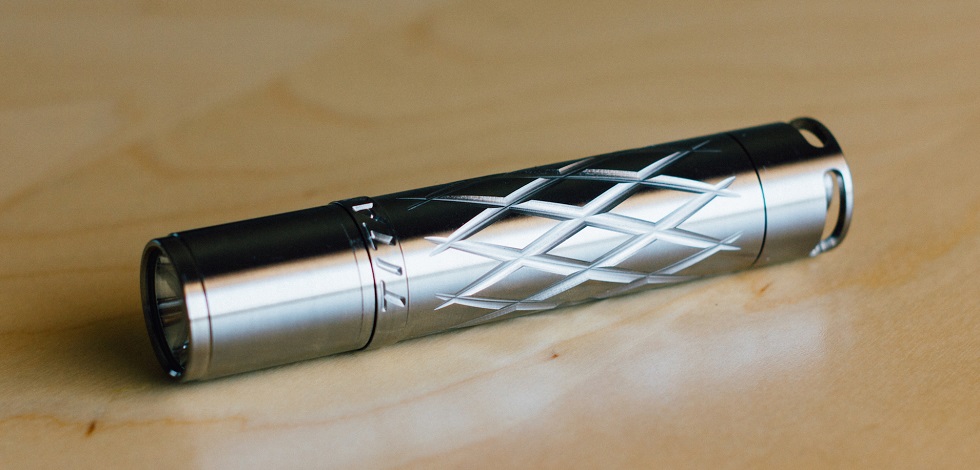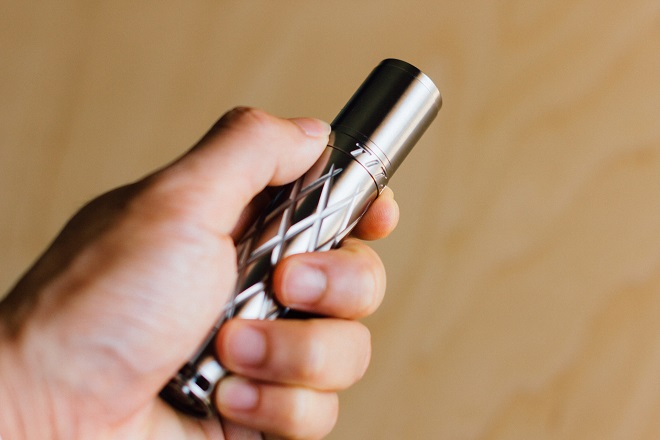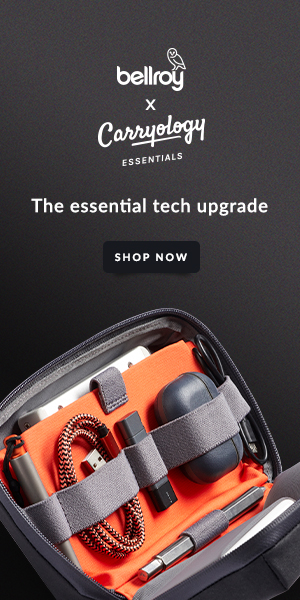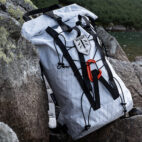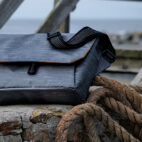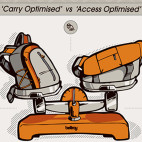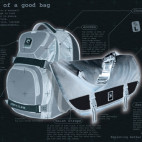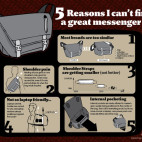Drive By :: Titaner Flashlight
When it comes to pocketable gear, titanium construction is one of the hallmarks of the higher end. This highly sought-after metal balances strength, light weight, a distinct feel in hand, and the versatility to produce a variety of distinct but beautiful finishes. China-based manufacturer Titaner specializes in crafting tactical and outdoor gear from quality titanium. In this review, we’ll take a closer look at their take on a pocketable flashlight to see if it’s right for your carry.
The Specs
- Dimensions: 110mm long x 21mm diameter
- Empty weight: 61.7g
- Body material: Solid Titanium
- LED: CREE XP-G2 LED
- Battery configuration: 1×18650
Who It Suits
Flashlight enthusiasts looking for an attractive, well-machined and durable titanium flashlight that won’t weigh them down.
Who It Doesn’t
The Titaner Flashlight is tricky to single-handedly turn on and adjust to different light modes, so for survival and tactical situations there are better options out there. It’s also not cheap, so if you’re after a budget flashlight, this isn’t it.
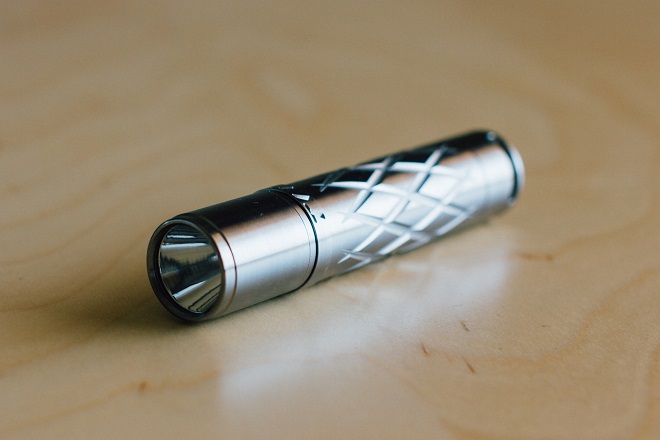
The Good
On the outside, it’s a beautiful light. Many EDC enthusiasts would agree that titanium itself adds a certain “bling” factor to otherwise common tools, and Titaner’s usable art here is no exception.
It’s uniformly cylindrical throughout, giving it a sleek aesthetic you might not expect from a maker of tactical goods. Looking closely at its subtly brushed finish, it appears iridescent under certain angles. It’s a small detail to see that spectrum of colors, but it’s one I appreciate.
“It’s uniformly cylindrical throughout, giving it a sleek aesthetic you might not expect from a maker of tactical goods.”
Titaner shows their machining skills in the light’s patterned portion of the barrel. The cross-hatching diamonds look precise, consistent, and clean. The same level of precision can be found in the light’s “selector ring”, where the “TITANER” branding is etched in for grip. Personally I think the visual contrast on the logo and grip is a bit much given how sterile the rest of the light is. These design cues almost read like afterthoughts to make the light seem tactical, when in spirit it seems more like a gentleman’s carry or luxury collectible.
“Titaner shows their machining skills in the light’s patterned portion of the barrel. The cross-hatching diamonds look precise, consistent, and clean.”
On the business end, you’ll find a CREE XP-G2 LED (which was centered nicely in my sample) at the bottom of a deep, smooth reflector (this helps concentrate the light into a far-reaching beam, but does less to “smooth” out imperfections in the beam compared to a textured reflector). The tail of the light confused me at first — it seems like a metallic pushbutton but it’s not a button at all. The tailcap is flat, however, allowing it to stand on its tail to act like an emergency candle.
The threads on the twist tail and at the head feel surprisingly smooth. Threads are difficult to machine and get right, especially when working with titanium. The common result is a gritty action to it, but the Titaner feels good to use. That’s a welcome relief, considering the light uses a twist-on activation.

The Not So Good
The light activates by twisting the tail end of the light tight. Given the design of the rest of the light, it’s a two-hand job. There’s no real grip on the tail portion or a pocket clip to help anchor the body during twisting. While twist mechanisms save on length, this light is not particularly compact to begin with, so I would have liked to see a push button in place. I think a one-handed activation would make more sense in tactical and outdoor situations as well, but it’s just as convenient in everyday use. You can hack a “momentary” pseudo-button activation by twisting the tailcap just outside of the “on” tightness and then using your thumb to press the cap to make contact with the battery.
Once on, you can cycle through the light’s four modes (starting from a max powered strobing interval setting, turning clockwise to high, med, then low) using a “selector ring” near the base of the head. There are distinct notches to give a tactile and audible feedback once you’ve selected a certain mode. You can leave the ring set in place at whichever mode you’d like the light to turn on at, but this is less helpful when realizing there are no markings to indicate what setting you’re on. Without this visual the light might come on at full blast, which can be inconvenient in everyday settings or potentially compromising in tactical ones.
“You can leave the ring set in place at whichever mode you’d like the light to turn on at, but this is less helpful when realizing there are no markings to indicate what setting you’re on.”
The grip works well, offering plenty of purchase into the palm. The selector ring grip, however, is less effective when operating single-handedly. Combining this with the twist-on activation and then using a ring to select modes, but without real visual indication (other than how bright the light is getting) of what mode you’re on, I found the UI difficult to get the hang of. There’s a learning curve for sure, but at almost $145 I would expect mostly enthusiasts to purchase this type of light.
“The grip works well, offering plenty of purchase into the palm. The selector ring grip, however, is less effective when operating single-handedly.”
With that said, at $145, the LED used is fairly dated technology. It’s not necessarily bad by any means, but even less expensive lights use brighter and more powerful emitters. According to Titaner, the light can run from 2.5-40 hours on its 18650 battery. The output at each mode isn’t explicitly stated, but it looks in the ballpark of 350 lumens max, stepping down to about 100 lumens, then down to 15 or so. I would have liked a lower low mode as sometimes even 15 lumens is too much.
In addition, you don’t have many options when it comes to carrying the light. For a light of this size, I would appreciate a pocket clip to keep it accessible and out of the way. Without one, there’s no other choice but to leave it loose, sitting at the bottom of your pocket or bag. The lack of the clip also means the light has no anti-roll mechanism. So setting it down on a flat surface only to have it roll out of reach can get frustrating, even more so in tactical or survival situations.
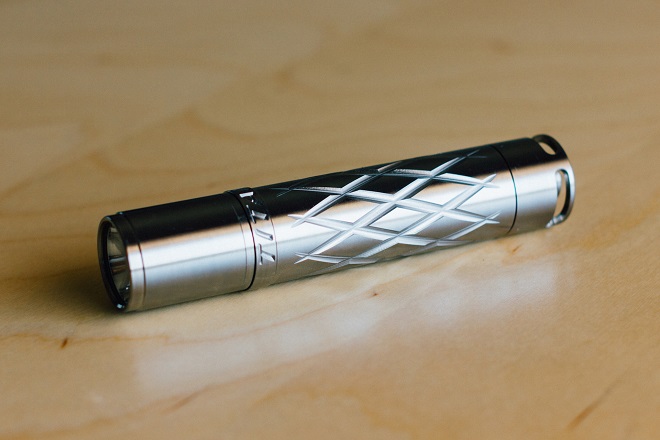
Pros & Cons
Pros:
- Well-machined titanium construction
- Good grip on patterned barrel
.
Cons:
- Clunky activation and UI
- Lacking a pocket clip
- Dated internal components given the price
Conclusion
Overall, this light is an example of what appears to be Titaner’s strengths as a manufacturer: machining the material they specialize in to a high-quality fit and finish. It has some promise in using less common features like a selector ring dimmer, but the execution comes short. And while the design is beautiful aesthetically, it misses the mark when it comes to usability and EDC-oriented design features. At $165 it’s not an impulse buy, and in my opinion, there is a learning curve. Based on its looks alone it’s a light you might be interested in, but once you get to know it better, you’ll see it might not be the one after all.





 Carry Awards
Carry Awards Insights
Insights Liking
Liking Projects
Projects Interviews
Interviews
